
20 celebrations this holiday season besides Christmas
Explore how other religions and cultures celebrate their holidays.
- Subject:
- Education
- Social Studies
- Material Type:
- Primary Source
- Date Added:
- 11/25/2021

20 celebrations this holiday season besides Christmas
Explore how other religions and cultures celebrate their holidays.
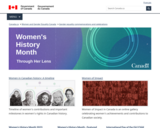
October is Women’s History Month in Canada, a time to celebrate the women and girls from our past, and our present, who are contributing to a better, more inclusive Canada.
In 1992, the Government of Canada designated October as Women’s History Month, marking the beginning of an annual celebration of the outstanding achievements of women and girls throughout Canada’s history. This year marks the 30th anniversary of Women’s History Month.
This year’s theme, She Did, So Now I Can, celebrates the actions of inspiring Canadian women that positively impact our lives today, right now, at this very minute. We are thankful for their courage and for inspiring us to do better.
The menu for this site includes links to explore:
- Women in Canadian History: A Timeline
- Women of Impact
- Women's History Month 2022
- International Day of the Girl Child - October 11
- Persons Day - October 18
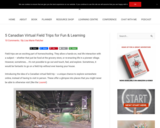
The virtual field trips on this site include:
The Parliament Buildings in Ottawa, Ontario
Iqaluit, Nunavut – The Canadian Arctic
Farm Tours
Canadian Museum of History
The Royal Tyrrell Museum
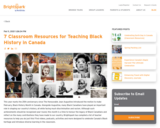
2021 marked the 25th anniversary since The Honourable Jean Augustine introduced the motion to make February Black History Month in Canada. Alongside Augustine, many Black Canadians have played an important role in shaping our country’s history, all while facing much discrimination and racism. Although such achievements should be recognized year-round, February is a time to honour the legacy of Black Canadians and reflect on the many contributions they have made to our country. Brightspark has compiled a list of teacher resources to help you do just this! Find videos, podcasts, activities and more designed to celebrate Canada’s Black heritage and introduce diverse learning in the classroom.
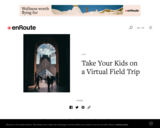
Curate your own exhibition at the Art Gallery of Ontario; swim with African penguins at the San Diego Zoo; travel back in time at the Louvre; visit the Canadian Museum of History; blast into outer space with NASA. This site offers all of these opportunities for your student to experience.

This playlist features films that confront racism. They are a small selection of films from the NFB collection that look at instances of racism in Canada, and support dialogue on equality and diversity.

Sign up for a 45 minute virtual field trip, and follow it up with a classroom unit about human rights and being an upstander. The classroom unit includes an inquiry project.
Virtual Field Trip:
Students will learn how to be human rights upstanders by discovering the stories of people who used their personal strengths to take a stand to protect their rights and the rights of others, creating change.
Students will:
1. Learn to identify traits all upstanders possess and understand that each of us also possess these traits in our own unique way.
2. Experience exhibits and the inspiring Museum architecture as if they were at the Museum in person.
Interact with a Museum guide and ask questions to better understand how they can take action for positive change.
3. Engage in discussion, critical thinking and reflection on their role in the protection of their own rights and the rights of others.
Classroom Unit:
The Be an Upstander resource is a project-based learning unit designed to complement the “Be an
Upstander” school program. This resource targets students in middle years and encourages inquiry and
action on human rights issues. Students will examine the traits of human rights upstanders and follow
their example. By the end of the project, students will have had the opportunity to explore an issue they
are personally passionate about, share their knowledge and lead others toward action.
The Be an Upstander website is a digital student experience designed to support student learning as part
of a larger human rights themed, project-based learning unit. Students developing upstander projects
will engage in personal inquiry and action on human rights issues that matter to them. Students will learn
about the traits of human rights upstanders, be introduced to the Universal Declaration of Human Rights
and examine their personal strengths. Following the example of the upstanders they learn about,
students will be challenged to take tangible steps to becoming human rights upstanders themselves.
If you need this resource in a different format for accessibility purposes, please contact
info@humanrights.ca.
Be an Upstander website: https://humanrights.ca/upstander/#/
Complementary teacher's guide https://humanrights.ca/upstander/#/teacher-guide
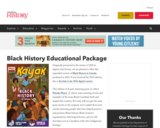
This edition of Kayak opens in new window, shares some amazing stories and examples of the ways Black Canadians built and shaped this country. You get great stories , as well as articles featuring people who have helped preserve and promote Black history, Black women’s organizations with long histories, and Canadians with Afro-Indigenous heritage.
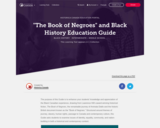
The purpose of this Guide is to enhance your students' knowledge and appreciation of the Black Canadian experience, drawing from Lawrence Hill's award-winning historical fiction, The Book of Negroes, the remarkable journey of Aminata Diallo and the historic British document known as the "Book of Negroes." Structured around themes of journey, slavery, human rights, passage to Canada and contemporary culture, this Guide asks students to examine issues of identity, equality, community, and nation-building in both a historical and contemporary context.
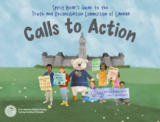
In 2008, a group called the Truth and Reconciliation Commission (TRC) was made. Their job was to listen
to stories about residential schools and then write the stories down so we can learn from our mistakes.
In 2015, the Truth and Reconciliation Commission announced their 94 Calls to Action. These are 94
activities all governments, courts, businesses, schools, and people living in Canada can do to help fix the
mistakes of the past and present so that all children – including First Nations, Métis, and Inuit children –
can grow up happy, healthy, safe, and proud of who they are.
This booklet is written by Spirit Bear as a youth-guide to the TRC’s 94 Calls to Action. Each of the calls is outlined in student-friendly language that will give them a deeper understanding of Truth and Reconciliation process.

In this interactive online activity, you will explore the Canadian Arctic, the history of the Northwest Passage and the importance of maintaining a strong Canadian presence in the northern region.
Questions:
1. Identify four unique characteristics of the Canadian Arctic region.
2. Identify contributions made by some of the Arctic explorers who searched for the Northwest Passage.
3. To what extent did the Inuit culture in the Canadian Arctic help with the discovery of one of Franklin's lost ships?
4. What impact would climate change and the opening of the Northwest Passage have on the Inuit people socially, environmentally, and economically?
5. How might the opening of the Northwest Passage affect Canada’s claim to Arctic sovereignty and its relationship with other countries?
6. What are some of the ways Canada is getting involved in protecting the Arctic?
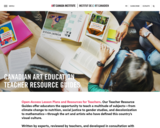
Canadian art is a door to learning about a wide range of subjects.
The Art Canada Institute teacher resource guides presented here offer students the opportunity to study a multitude of subjects—from environmental awareness to activism, social justice to gender studies, politics to computer science (to name a few)—through the art and artists who have defined this country’s visual culture.
Following our provinces’ education curricula, the teacher resource guides provide multidisciplinary learning activities that reveal how Canadian art powerfully reflects our world so we can better understand it.
Activities for K-12!

Canadian Geographic Education provides learning resources to help improve students’ understanding of the world they live in. Geographically literate students are better prepared to face global challenges and have the skills necessary to become effective change agents. Use these resources to inspire curiosity and exploration in your classroom!
Lesson plans
Videos
Maps
Infographics
Activities
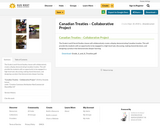
The Grade 6 and 8 Social Studies classes will collaboratively create a display
demonstrating Canadian treaties. This will provide the students with an
opportunity to be engaged in a high-level task, discussing, making shared
decisions, and designing a product that demonstrates deeper learning.

An inquiry-based project to map the land in your community. The key concepts in this unit are grounded in Indigenous beliefs of interconnectedness, connectedness, and respect for all things.
The driving inquiry questions for this unit are:
1. How can respect for the land be shown?
2. What do we look for when setting up a camp?
3. What stories or teachings are connected to key locations in and around our community?
4. How has the land around our community changed over time?
5. Who do we share our community’s lands with?
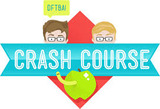
CrashCourse offers many YouTube videos that support various historical topics, such as sociology, world history, and much more!
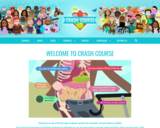
You can learn pretty much anything with these videos!
Science, History, Language Arts, & Study Skills, Games & More!
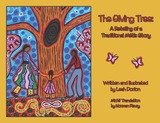
Explore the elements of art, culture, and identity through this guided lesson based on Leah Dorion's "The Giving Tree: A Retelling of a Traditional Métis Story." We are connected through place and culture! The values, beliefs, traditions, religion, natural environment, recreational activities, music, dance, and art that surround us help to form our identity. We share, listen, learn, and grow from and with each other. Students will think about their own identity and the many pieces that make them unique as they create a painting in the style of Leah Dorion's work.

Find a ton of pre-recorded virtual events from Flipgrid to use with your class.
There is something here for every age group, and every subject!
Enjoy exploring.
Find future Flipgrid events here (copy and paste into a browser) https://blog.flipgrid.com/upcomingflipgridliveevents

FourDirectionsTeachings.com is a visually stunning audio narrated resource for learning about Indigenous knowledge and philosophy from five diverse First Nations in Canada. Navigate to the site map for access to the teacher lesson plans to go along with the interactive audio and visual content.
Junior: Grades 1-6
Intermediate: Grades 7-9
Senior: Grades 10-12
Four Directions Teachings rend hommage à la tradition orale autochtone, en mettant en valeur le procédé d’écoute attentive, lorsque un ancien ou un professeur traditionnel partage un enseignement, selon son point de vue, sur la richesse et la valeur des traditions culturelles provenant de sa nation.
Available in:
Flash Version - English and French
HTML Version - English and French
Subtitles Version - English and French